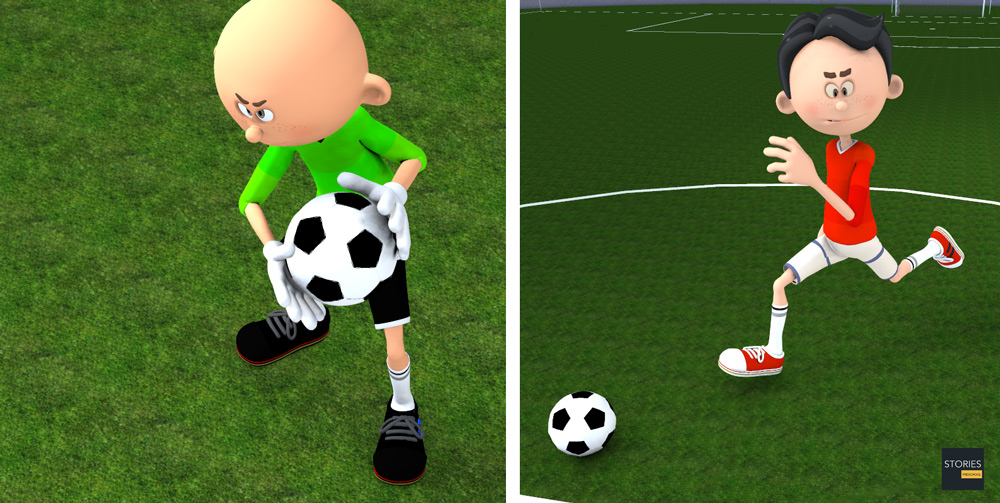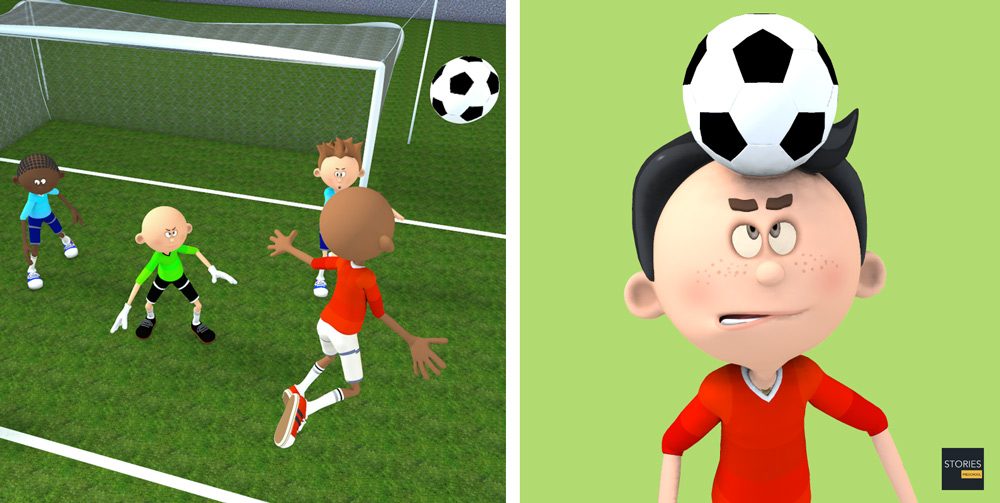Soccer

Soccer Ball
A football, soccer ball, or association football ball is the ball used in the sport of association football. The name of the ball varies according to whether the sport is called "football", "soccer", or "association football". The ball's spherical shape, as well as its size, weight, and material composition, are specified by Law 2 of the Laws of the Game maintained by the International Football Association Board. Additional, more stringent, standards are specified by FIFA and subordinate governing bodies for the balls used in the competitions they sanction.

Early footballs began as animal bladders or stomachs that would easily fall apart if kicked too much. Improvements became possible in the 19th century with the introduction of rubber and discoveries of Vulcanization by Charles Goodyear. The modern 32-panel ball design was developed in 1962 by Eigil Nielsen, and technological research continues today to develop footballs with improved performance.
History
In 1863, the first specifications for footballs were laid down by the Football Association. Previous to this, footballs were made out of inflated leather, with later leather coverings to help footballs maintain their shapes. In 1872 the specifications were revised, and these rules have been left essentially unchanged as defined by the International Football Association Board. Differences in footballs created since this rule came into effect have been to do with the material used in their creation.
Footballs have gone through a dramatic change over time. During medieval times balls were normally made from an outer shell of leather filled with cork shavings. Another method of creating a ball was using animal bladders for the inside of the ball making it inflatable. However, these two styles of creating footballs made it easy for the ball to puncture and were inadequate for kicking. It was not until the 19th century that footballs developed into what a football looks like today.
Vulcanization
In 1838, Charles Goodyear introduced the use of rubber and their discoveries of vulcanization, which dramatically improved the football. Vulcanization is the treatment of rubber to give it certain qualities such as strength, elasticity, and resistance to solvents. Vulcanization of rubber also helps the football resist moderate heat and cold. Vulcanization helped create inflatable bladders that pressurize the outer panel arrangement of the football. Charles Goodyear's innovation increased the bounce ability of the ball and made it easier to kick. Most of the balls of this time had tanned leather with eighteen sections stitched together. These were arranged in six panels of three strips each.
Reasons for improvement
During the 1900s, footballs were made out of rubber and leather which was perfect for bouncing and kicking the ball; however, when heading the football (hitting it with the player's head) it was usually painful. This problem was most probably due to water absorption of the leather from rain, which caused a considerable increase in weight, causing head or neck injury. Another problem of early footballs was that they deteriorated quickly, as the leather used in manufacturing the footballs varied in thickness and in quality.

Construction
Today's footballs are more complex than past footballs. Most modern footballs consist of twelve regular pentagonal and twenty regular hexagonal panels positioned in a truncated icosahedron spherical geometry. Some premium-grade 32-panel balls use non-regular polygons to give a closer approximation to sphericality. The inside of the football is made up of a latex bladder which enables the football to be pressurized. The ball's panel pairs are stitched along the edge; this procedure can either be performed manually or with a machine. The size of a soccer ball is roughly 22 cm (8.65 inches) in diameter for a regulation size 5 ball. Rules state that a size 5 ball must be 68 to 70 cm in circumference. Averaging that to 69 cm and then dividing by π gives about 22 cm for a diameter.
The ball's weight must be in the range of 410 to 450 grams (14 to 16 oz) and inflated to a pressure of between 0.6 and 1.1 bars (8.5 and 15.6 psi) at sea level.
There are a number of different types of football balls depending on the match and turf including: training footballs, match footballs, professional match footballs, beach footballs, street footballs, indoor footballs, turf balls, futsal footballs and mini/skills footballs.
SPORTS

RESOURCES
This article uses material from the Wikipedia articles "Association football" and "Ball (association football)", which is released under the Creative Commons Attribution-Share-Alike License 3.0.
© Stories Preschool. All Rights Reserved.












